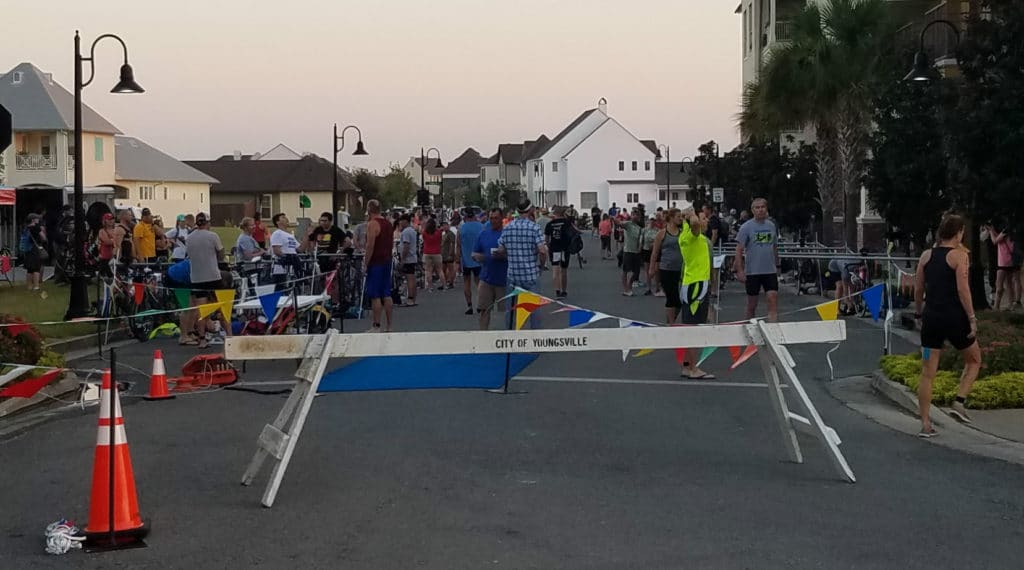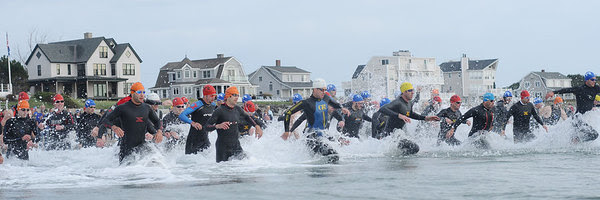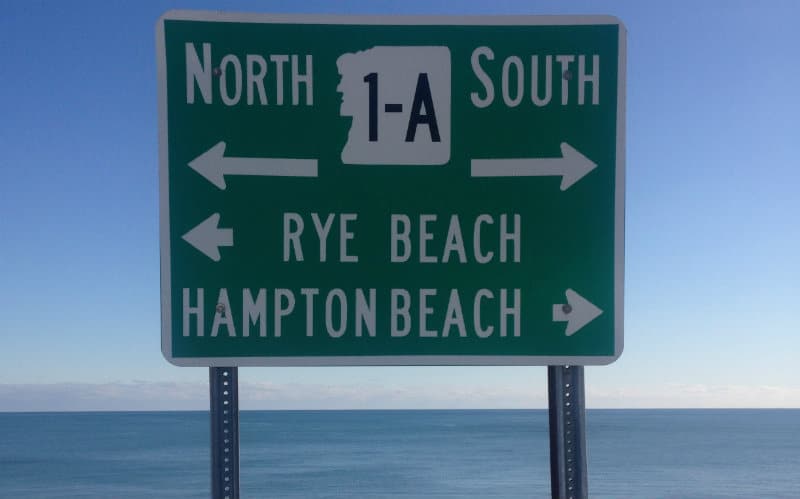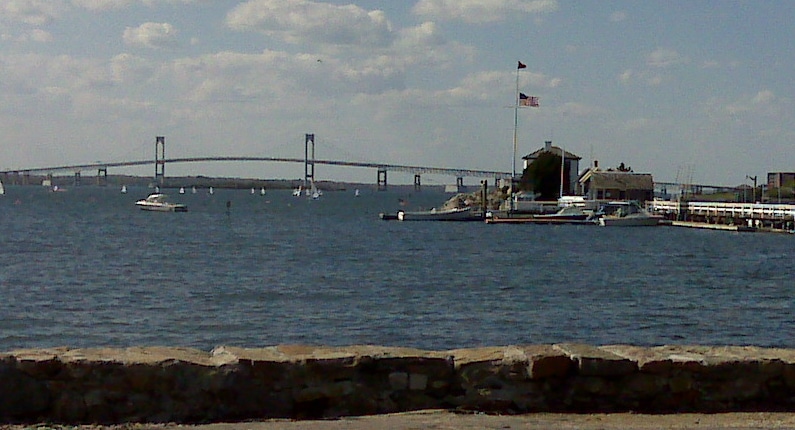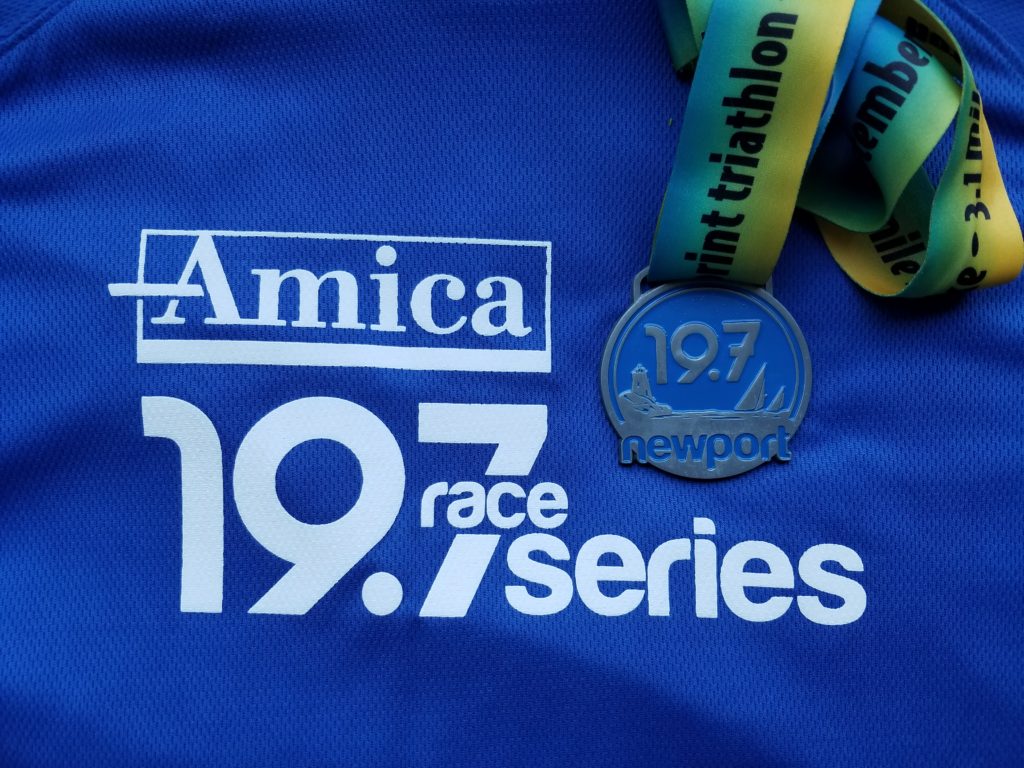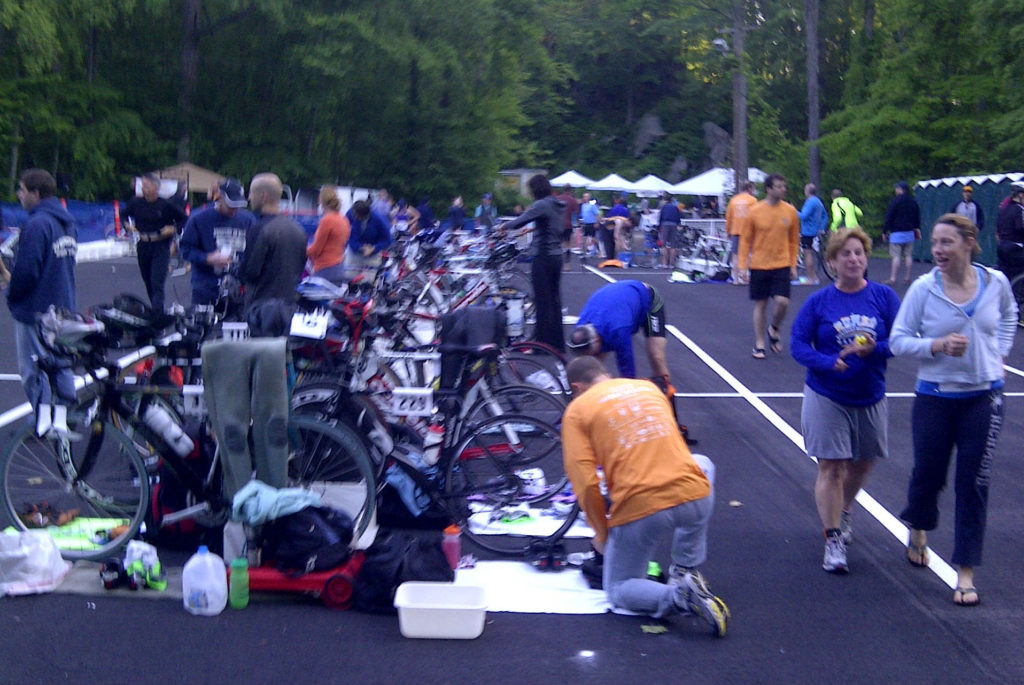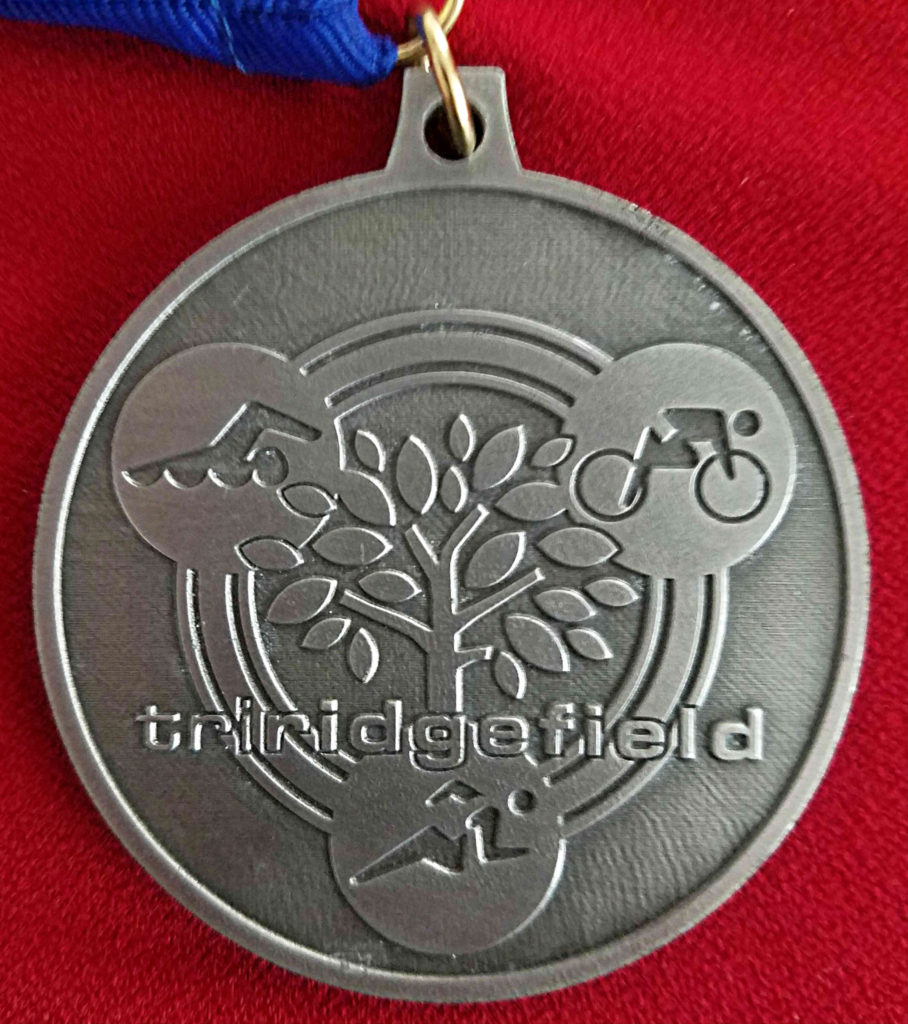Triathlon Across the USA: State #34 – Louisiana
Youngsville, Louisiana; October 1, 2017—Sugarman Triathlon, Sugar Mill Pond.
I had not originally planned to compete in a triathlon in Louisiana during 2017. However, a race in a western state that was part of my original plan did not take place. Then there was Hurricane Harvey.
The October 1st date of the Sugarman Triathlon fit nicely into our plans to visit Florida for our wedding anniversary. Besides, its location in western Louisiana provided us the opportunity to meet a friend who had been through a horrific time with Hurricane Harvey and its aftermath.
While our friend lived in Katy (Houston), Texas, she had been commuting to Baton Rouge, Louisiana for work for over a year. Youngsville provided a perfect meeting point for a face-to-face visit to get caught up.
Getting to the Louisiana Triathlon
Joy and I left our Minnesota home at a little before 6 am on Friday morning. With a new audiobook playing on the radio, we headed toward Little Rock, Arkansas, where we would spend our first night. The overnight stop in Little Rock meant we were roughly two-thirds of the way to the race venue in Youngsville (Lafayette), Louisiana.
We finished the trip to Youngsville the next day, arriving in plenty of time for packet pickup. Following this, we made a quick tour of the race venue around Sugar Mill Pond. We finished the evening with our friend from Texas around some authentic Cajun cuisine at Poor Boy’s Riverside Inn.
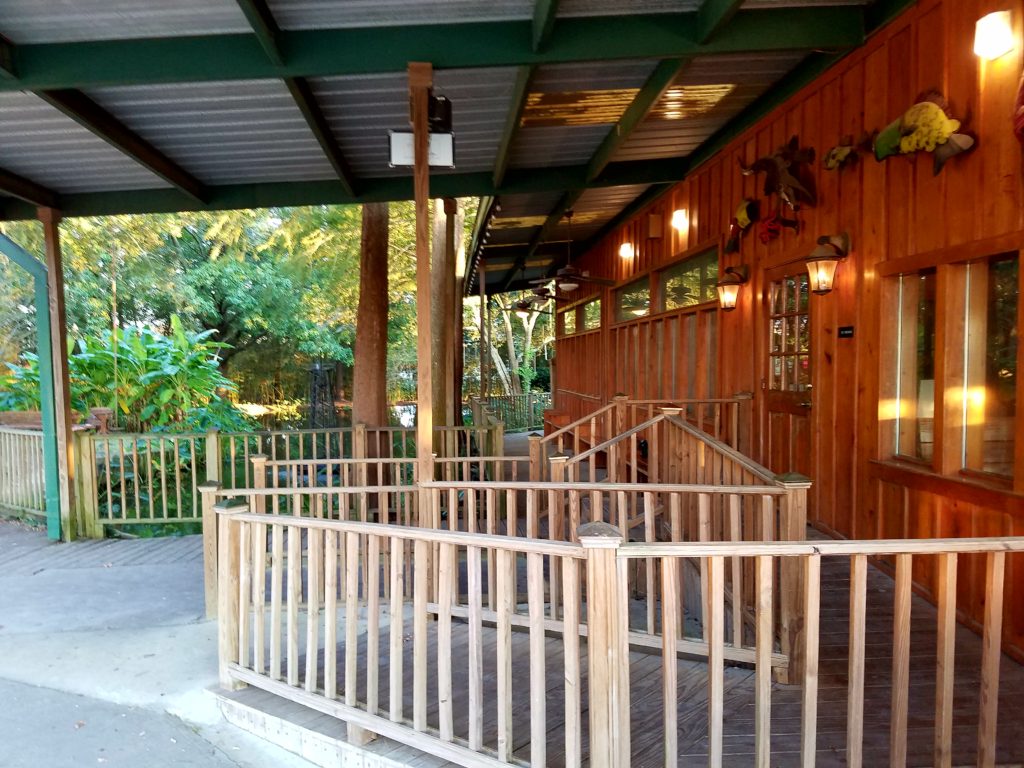
8th Annual Sugarman Triathlon
2017 was the 8th annual running of Sugarman Triathlon. Like many triathlons, Sugarman doubled as a fundraiser.
For this race, the proceeds benefited two causes important to the area – the Jacob Crouch Foundation for suicide prevention and TRAIL (Transportation Recreation Alternatives In Louisiana), an organization aimed at “building and maintaining opportunities for outdoor recreation”.
Distances for the individual legs of this USAT-sanctioned sprint triathlon were:
- Swim: 0.3 mile (500 m)
- Bike: 15 mile (24 km)
- Run: 3.1 mile (5 km)
Participants had the choice of racing within Age Groups, in Relays, or as Clydesdale (male) and Athena (female).
Transition
The transition area for the nearly 200 participants occupied the space on Waterview Street between Shore Drive and Prescott Boulevard, in front of the Sugar Mill Athletic Club.
Racers were assigned a rack based on our race number. As is customary, we racked our bikes alternately facing one of the two transition area exits. For example, if the bike occupying the end position faced toward the ‘Bike Out’ end, the next bike would be racked to face opposite this, or toward the ‘Run Out’ location.
How Do You Setup Your Transition Space?
You may have heard the saying, “you cannot win a triathlon in transition, but you can lose it.” Any time spent in transition is just as important as time taken in the individual legs of the race.
Shaving a minute from your transition time is just as good as reducing your swim or bike or run time by a minute.
How To Achieve Faster Transition TImes
One key to faster transition times in a sprint distance triathlon is keeping the setup of the transition area simple. The video below shows how I setup my transition area for this and most other sprint distance races. Simpler is faster.
Video describing setup of my transition area at Sugarman Triathlon.
Before the Start
Race organizers set a pleasant tone for the event, especially during the final moments before the first racers hit the course. Participants, volunteers, and spectators all came together at dockside alongside Sugar Mill Pond. Here, everyone joined in reciting the pledge of allegiance, singing of the National Anthem, and prayer.
Congratulations to the young lady to lead us in the National Anthem. What a beautiful voice!
Swim
The swim was an in-water start with participants beginning in groups based on gender and age group. The first group (also referred to as the ‘first wave’) included all males aged 50 and over and all Relay participants.
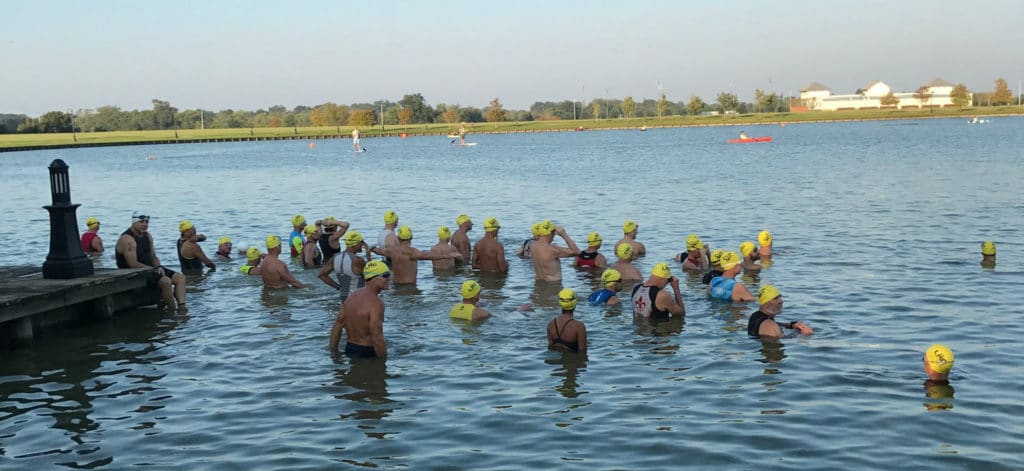
Swimmers followed a counterclockwise course around a series of buoys that led us to the exit a few hundred yards south of our starting location.
Bike
The 15-mile bike course was well marked and staffed with many volunteers and members of the local police department. There was no question about the course or the safety of the participants. The out-and-back course was nice and flat.
However, the less than ideal road conditions, with many asphalt repairs, kept us “on our toes”. These repairs meant lots of rough patches for those of us who obeyed the call to stay to right.
Fortunately, my fellow racers were forgiving. This was especially true for the guy who I pulled in front of to avoid an exceptionally rough area.
Thank you, sir. You are a gentleman.
Run
The temperature just before the start of the race was in the low 70s °F. However, it shot up quickly. By the time I finished the run, the temperature was somewhere in the upper 80s and very humid.
Such conditions are not unusual, or even considered hot, for those who live in the South. However, for me, a Minnesotan, the upper 80s with high humidity represents a condition in which I usually say “Maybe later” to running.
My run was slow, with stops at each of the many aid stations. Despite taking a glass of Powerade at each of these, I experienced a cramp in my hamstring with about a half mile to go.
Thankfully, an answer to my quick prayer came as relief from the cramp. I finished the final 1/2-mile of the run around the pond with a respectable sprint through the dockside finish line.
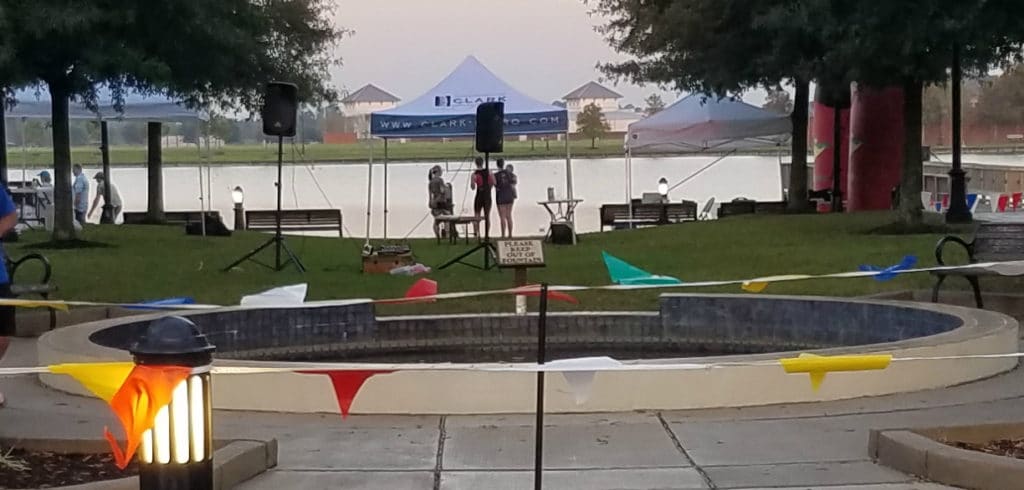
After the Race
With the race finished, Joy and I attended the 11am service at the Bayou Church. Not only did we enjoy the worship and fellowship with other believers, but helped to celebrate the pastor’s 33rd anniversary as pastor. This was another opportunity to experience Acadiana (French Louisiana).
From here, we continued our journey to The Villages, Florida, where we would spend the next two weeks.
Race Firsts
- First race within a planned residential neighborhood.
- First race involving swim in a man-made pond.
- Roundabouts on the bike and run courses was another first.
Comments
Where in Louisiana have you done a triathlon? What did you learn from this race?
Please share your comments below.


